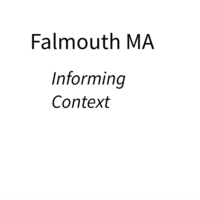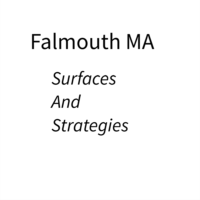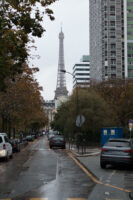As part of this week’s reflection I have considered the following questions:
- How much do you consider the audience when making your work?
- How much would you allow a curator to influence the reading of your work?
- Can curators be useful to your practice?
This week’s work can be divided into three distinct activities: proposing my own work for the exhibition, helping to facilitate the process to select curators and designers and the process of curation.
Proposing work for exhibition I felt was the easiest of the three tasks as I had a very clear idea of how my mini-project would support my work during the second half of module 3. The nature of the project meant it was also representative of the work I am developing for the main project while being self-contained, this meant it would be possible to create a resolved body of work. The feedback I got from other members of the course provided me with positive confirmation that they understood the intent of the work and it’s context with other photographers on the course. The work has parallels to the environmental elements of Josie Purcell alternative processing practice and the architectural work of Philip Singleton who explores buildings in transition.
The second activity of helping select the curators and designers for the task required a different set of skills as I had decided to put myself forward as a curator but felt there was no one taking a lead in helping to select the curatorial and design teams. To help bring structure to the process I proposed a timetable and a method for voting to the group. Some members of the group were concerned that this dual role might present a conflict which I felt was a fair challenge but given my proposal to use a tool such as surveymonkey the process would have been auditable. In the end to avoid conflict Gary McLeod as module leader setup the polls which ultimately resolved the issue to the satisfaction of all parties. This is something I will consider in the future when undertaking similar activities.
The third task during the week was working with Mandisa and Paul as part of the curatorial team. My sense is at the start of the activity we were approaching the activity from different directions. Each of us read the material on the role of a curator slightly differently. I felt the material was better suited to execution of the role in a more traditional setting where the exhibits are all housed in a single gallery space or a single city like Photomonth in Krakow or Format in Derby where you can expect visitors to look at multiple exhibitors works. For me in that situation the curator can play a key role in the order of exhibits in a single structure placing contrasting works next to each other to provoke a reaction from the reader.
In the case of the exhibitions for this module each student has to source the exhibition location and take care of the local marketing. In this situation, the curator’s role is different and I felt the role was about defining a theme and sub-theme that help contextualise the work of the different students. I felt the others came at the task from a more traditional curatorial position as an example Paul wanted to group contradicting exhibits into sub-themes, something that I felt was better suited to the more traditional exhibition space.
My initial thought was to have three sub-themes defined by single words. I found it easy to define two single word sub-themes but got left with a group of images where I found difficult to contextualise the group through a single sub-theme and my initial groups were not balanced in number of exhibits which I felt was important to try and give each exhibit equal balance and merit.
Looking at the proposed grouping and titles suggested by Mandisa and Paul I could see that by combining aspects from each person’s selections and ideas for themes we could achieve a strong outcome. After several webinar sessions as a group we defined our initial proposal which we shared with Gary. He provided us with some constructive feedback which given the initial proposal was fair in the sub-themes did not hang together cohesively and the main theme did not bear any relation to the sub-themes. He suggested we should use single word sub-themes and provided us with a few suggestions. As a group, we considered the feedback we felt the use of single word sub-themes would fundamentally change the construction of the groups which as a group we felt were strong. We did revisit the sub-theme and theme titles and as a team agreed on a more cohesive set.
Theme: Searching for Meaning – which is something I think all students on the MA are trying to achieve through academic study of their practice.
Sub themes:
- Who is responsible – for me is exploring the impact man has on his environment. The projects in this sub-theme are exploring different aspects of the subject. Strong examples of the work in this group are Philip Singleton and Simon Sweeney
- How we live – for me looks at different aspects of how groups of people interact. Strong examples the work in this sub-theme are the work Ashley Truckey and Gemma Willis.
- What defines us – for me challenges the predefined perceptions that we have of people based on initial superficial observation that if we look more closely we will discover more about the subjects portrayed by the photographers projects. I think the work of Chris Northey and Maryann Morris are great examples.
I really enjoyed the role of curator and the challenge of interpreting others work placing it in a context that does not dismiss any single exhibit and results in a stronger collective outcome. I recognise that this role was not a typical curatorial role but it did require us to deal with concerns of photographers who thought we might change the direction or interfere with a core attribute of their project. I was pleasantly surprised with the positive feedback we got when we shared the theme and sub-themes.
Acting as a curator has given me new appreciation for the other side of the equation when I submit work for inclusion in exhibitions and the level of responsibility that a curator has to both the artists and the public who will view the exhibition. I will asa result be more open to their feedback when submitting my work a endeavour to be less protective and be more open to alternative readings of my bodies of work.
On a final note the experience has made me consider if curating artist exhibitions is an element that I could incorporate into my practice. This is something that I will look to explore during the module sustainable prospects.




